Matriarch Promenade
Whether Asian (Elephas maximus indicus) or African (Loxodona africana) or forest elephant (loxodonta cyclotis)~ the presence of elephants on this earth fortifies. Long may they breathe and perambulate.
As I forged another silk screen last week, I realized I hadn’t stumbled upon my imagery for the print arbitrarily. I stopped to ponder how elephants had repeatedly been impacting my life. As I began committing my passion for elephants to writing, I determined that my admiration for elephants had in fact been going on for decades!
When I was 9 years old, my parents, sister Erika and I went on a summer vacation in the ol’ Meteor. Our destination was the Rocky Mountains. We made a pit-stop in Calgary to look up my Papa’s school friend. As one of our sightseeing excursions, Mr. and Mrs. Weishaar recommended an afternoon foray to the Calgary Zoo. I was comci’ com ca about the idea, however when Mr. Weishaar explained there were giraffes to be ogled my interest was piqued.
As it turned out, the Zoo was indeed fantastic! however what made it truly remarkable was something no one had bargained for. A famous visitor had arrived at the Zoo! To my amazement the peregrine elephant from the T.V show Daktari was fortuitously featured as the star attraction. I got caught up in the frenzy for I must confess, I had been a huge fan of Daktari for at least 3 years.
(I’m not positive but Dr. Marshall Tracy might well be standing beside the aforementioned elephant in the picture above)
To my amazement my sister and I were generously offered an elephant ride by Mr. Weishaar (may I emphasis the ride did not come at a pittance, even in those days). As I looked into my parents insisting eyes, I can only describe my feelings as “farouche”.
My sister immediately refused the offer, as she was nearly 3 years older than I was, and it would have been utterly mortifying to her to sit on an elephant at age 13. Well that left me to stand in queue by my lonesome. I couldn’t muster the bravado owing to the fact that my shyness was like a wet debilitating blanket. What I needed was a big heaping dose of persuasion – however this was not what was being offered. In the end I feebly declined and my parents and the Weishaar’s could not hide that they were seriously disappointed in me.
I attempted to linger. Skulking for that last glimpse of what could have been. I espied the celebrity elephant flaunting her trunk to and fro as she dawdled off with screeching children on her on glutus maximus. The grown-ups could not have known that “my dreams” were those dashed that day.
I agonized over my mutton-head refusal for the weeks that followed. I kept envisioning myself mounted, on that elephant, waving to the envious crowd below, with the belief that I would have looked like a verifiable deity astride that elephant. I scarcely survived my disappointment for the rest of the vacation. I had my indecision and disabling shyness to blame for the shattered scheme.
My obsession for elephants did not end here.
When my daughters were 2 and 5 years old, I made certain they too become acquainted with an eminent Elephantidae family – namely the Babar family. We watched the t.v. show assiduously (all three of us when possible) when ever scheduled on CBC. We indulged ourselves the dream elephant living in harmony with people. We derived obsequious enjoyment from the animated series.
“That evening after dinner Babar tells the Old Lady’s friends about his life in the great forest”
I moved to The Republic of Maldives in 1999 with my husband and our two children. While there I read a great deal. One of the most enjoyable reads at that time was “The White Bone” by Barbara Gowdy. Gowdy describes the complex culture of elephants, seen through their eyes, mind and perspective. The elephants are given a unique narrative voice throughout their lurid journey which could more aptly be characterized as an exile.
After reading this novel with cosmic fervor, it seemed only natural that my life journey would draw me towards the Asian elephants of Sri Lanka since my proximity to them was merely a stone’s throw from Maldives. The day I finished the book I knew that I would always stay irrevocably connected to elephants.
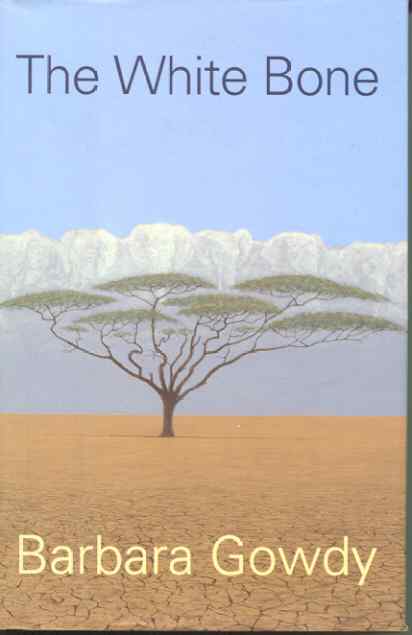
As fate would have it, in 2000 I found myself gazing incredulously at the elephants in the Elephant Orphanage in Pinnewalle, Sri Lanka. I seriously thought I’d reached my very own, exclusive nirvana. We observed each elephant’s personal history with deference, for here at the orphanage they had at last each reached a safe refuge from either torment, abuse or neglect.
While in Sri Lanka we went on an elephant safari in Habarana. It was dare I say, tons of fun. This time my entire family shared the adventure of an elephant ride. The elephant negotiated a river, a dense tropical forest and jungle-like terrain (as seen in the photo below). It was my childhood dream, come true at last! 
I felt once and for all domiciled in the beautiful “kingdom” of Sri Lanka. The jewel of India could have easily become my safe haven in much the same way as it had for the elephants there.
My travels have endowed me with many elephant artifacts. They are cogent sentinels throughout my home and they seem to emanate prudence and balance.
Elephants evince power and determination, represent perseverance and epitomize arduous labor. More profoundly they symbolize dignity. Theyhave a very long life span and their wisdom and understanding of mortality continues to mystify humans. Many years ago I watching a true story of Echo the African bush elephant on BBC . I felt a deep compassion for the matriarchal society in a land so vast and beautiful yet savagely harsh. A heartbreaking and heart-strengthening story to be sure. I first watched Echo being born in 1973 and a few months ago I happened to watch the final segment of Echo’s Life on BBC. If you ever have the opportunity to view any of the broadcasts please do so. It is oftentimes a sorrowful story but in the end culminates into a truly magnificent chronicle.
Buddhists believe the elephant symbolizes strength. Indeed they exhibit the noble gentleness and calm majesty of one who is on the path of enlightenment.
Ergo the vignette of the bird atop an elephant in my silkscreen, I envisage their stroll to be a parade though their parallel dominions, each protecting their contiguous latitudes. The silk screen of a bird perched atop elephant elucidate a peerless relationship between flight and stability. The bird who has the gift of flight and is the paradigm of freedom, while the elephant represents durability and stability and is the acumen of permanence. The bird is a hegira master juxtaposed atop the elephant, who is bound to endure the perils proffered by nature.
Despite their opposing idiosyncrasies, a significant bond exists between bird and elephant. Here their wisdom fuses and they manifest an unlikely paradox.
“Elephant ride”, Silk Screen ~ Karin Aldinger ~ April 4, 2011

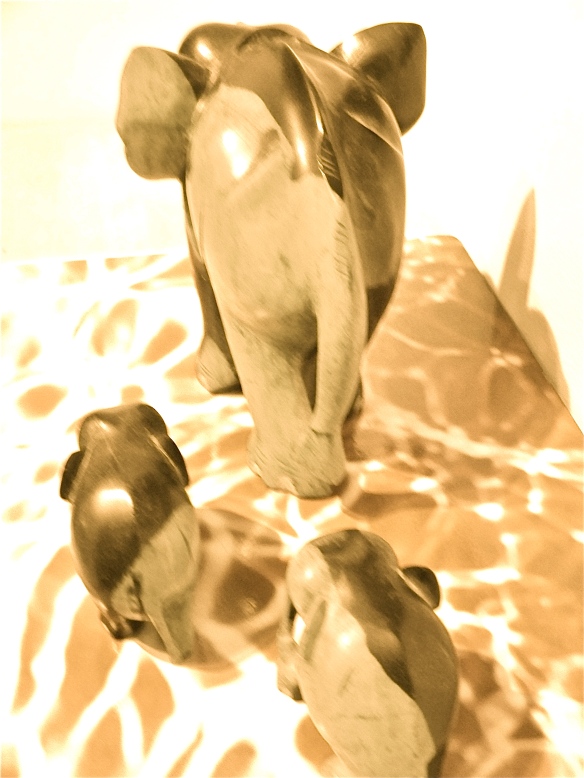
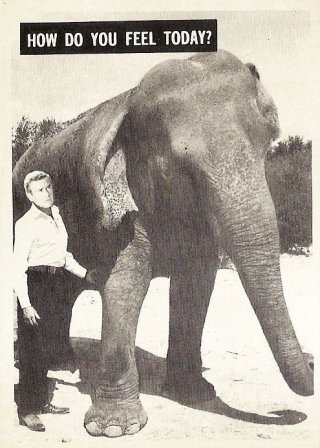
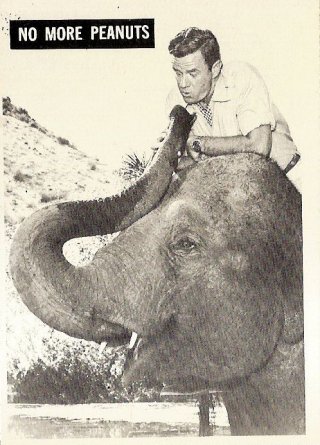






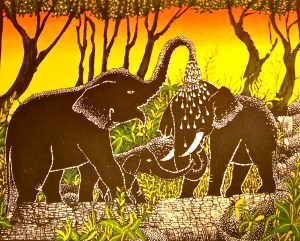


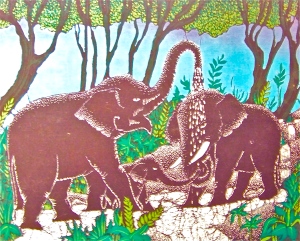



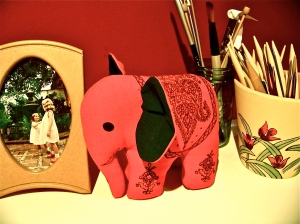

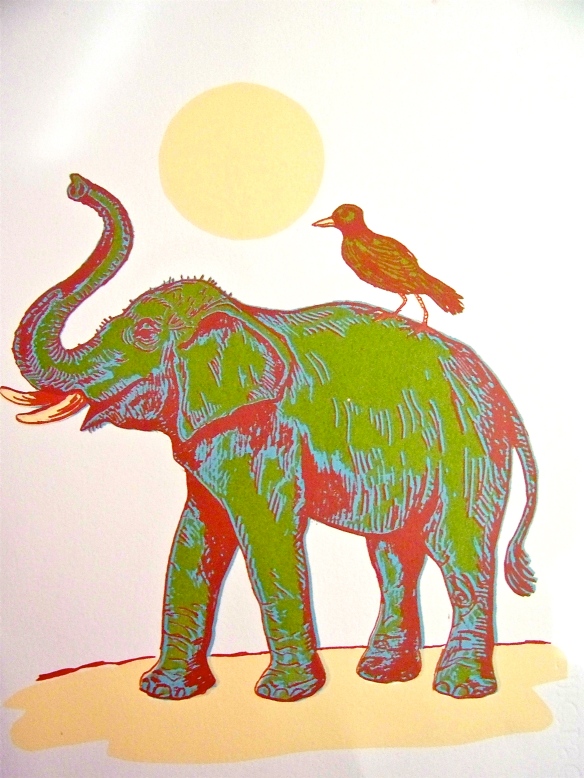
mom your website rocks
Dear anon, thank you.
My spidey senses indicate that you might be my daughter.
I love you! but not because of your praise because you are you.
: )